What Are the Creative Briefs Used for?
Creative briefs are used to provide clear and concise instructions to creative professionals, such as designers, writers, or marketers, about a specific project or campaign. They serve as a guiding document that outlines the objectives, target audience, key messages, brand guidelines, and any other relevant information that will help the creative team understand the project requirements and deliver the desired outcome. Creative briefs are essential in ensuring that everyone involved in the project is aligned and working towards the same goals, resulting in more effective and impactful creative work.
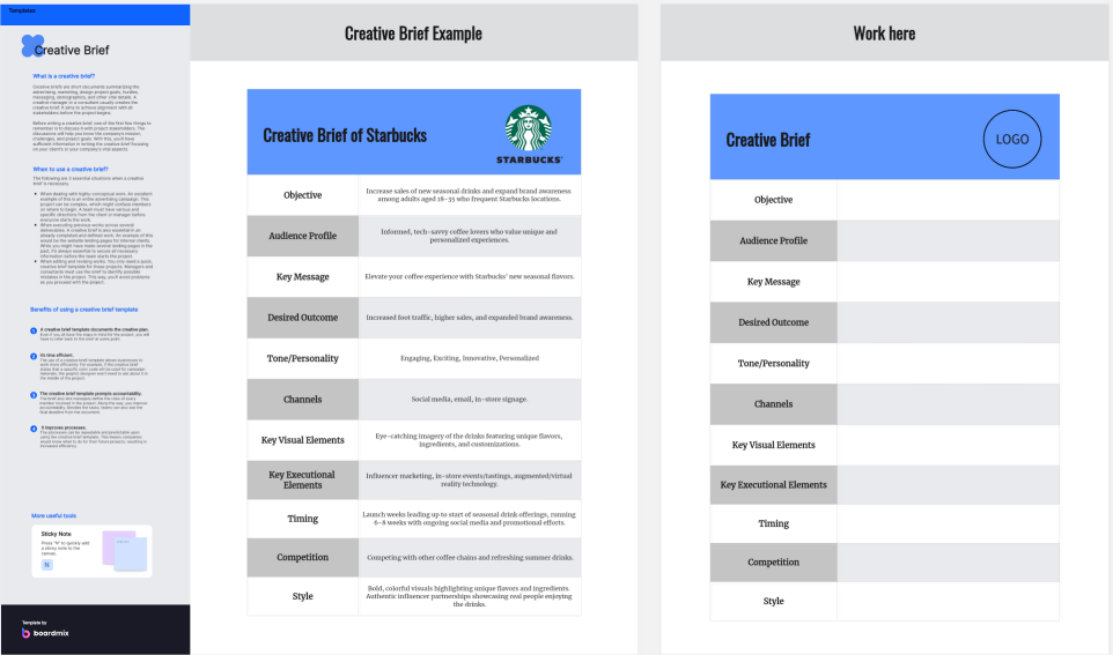
5 Creative Brief Examples for Free
A creative brief is a crucial tool that can help designers, marketing teams, and clients reach a consensus, ensuring the smooth progress of a project. Here are 5 examples of creative briefs that encompass a wide range of industries and projects.
1. Creative Brief for an Advertising Campaign
In this creative brief, the client requires the design of a new advertising campaign to promote their newly launched product. The brief outlines the product's features and target market, as well as the company's branding style and slogan. It also meticulously describes the objectives of the advertising campaign, such as anticipated sales increase, heightened brand awareness, or attracting a particular number of new potential customers.

Make Your Creative Brief for Free
2. Creative Brief for Web Design
For clients interested in designing a new website, they might provide a creative brief that includes information about the company and the product, the target users, the website's objective, design requirements, and so forth. This way, designers can comprehend what the company hopes to achieve via the website, such as enhancing brand image, increasing user engagement, or boosting online sales.
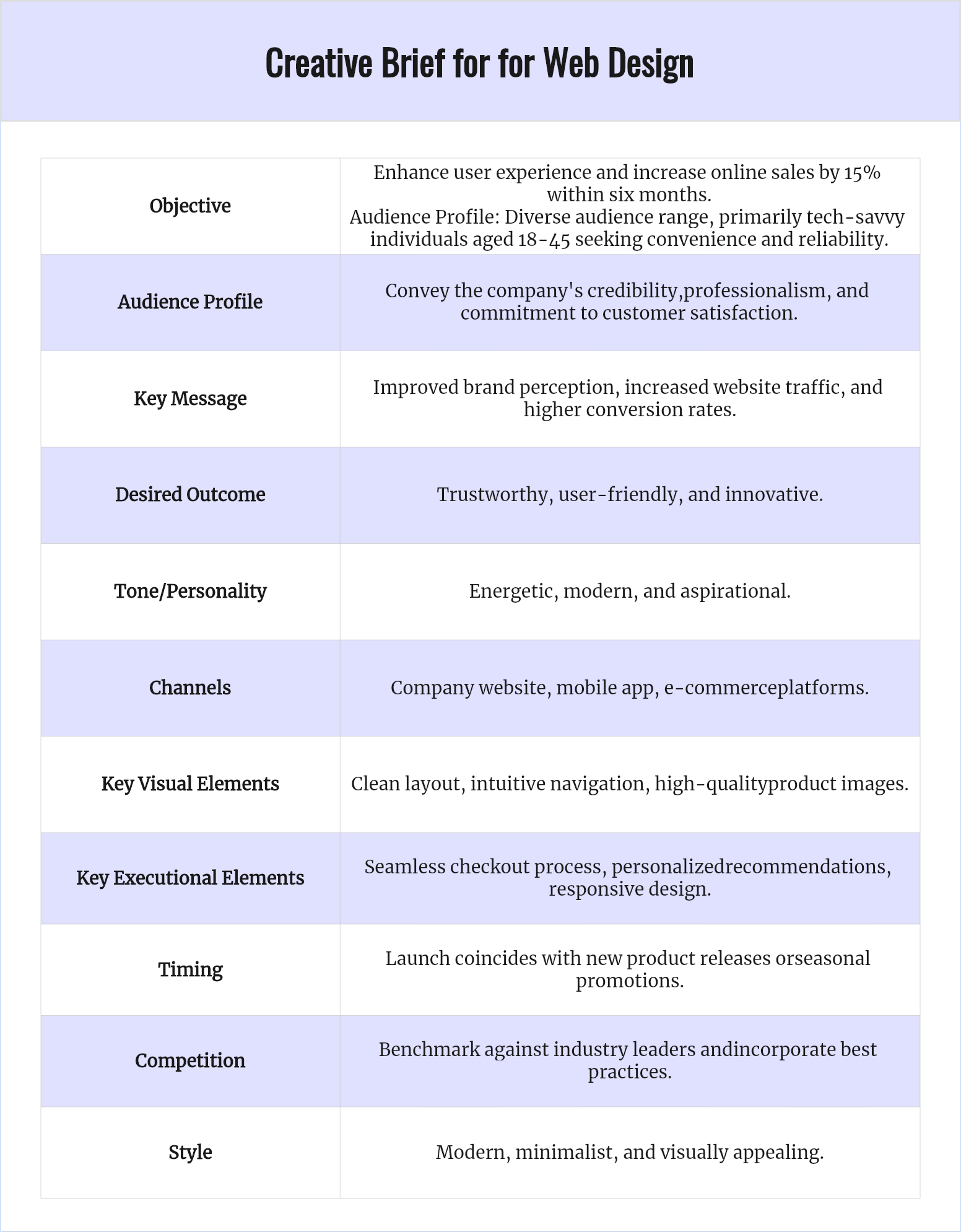
3. Creative Brief for Brand Revamping
In a brand revamping project, the creative brief may consist of an analysis of the current brand image, areas requiring improvement, the objectives of the new brand image, and elements to consider during the revamping process. The brief should explain in detail how the revamping plan aligns with the company's strategy, attracts the target market, and enhances customer satisfaction.
Objective: Reinvent brand image to resonate with younger demographics and increase market share by 10% within a year.
Audience Profile: Diverse audience range, with a focus on millennials and Gen Z consumers seeking authenticity and social responsibility.
Key Message: Showcase the brand's evolution, values, and unique selling points.
Desired Outcome: Increased brand loyalty, expanded customer base, and improved market position.
Tone/Personality: Authentic, inclusive, and forward-thinking.
Channels: Rebranding across all touchpoints - website, social media, packaging, marketing materials.
Key Visual Elements: Refreshed logo, updated color palette, cohesive visual identity.
Key Executional Elements: Engage influencers, launch interactive social media campaigns, host brand events.
Timing: Strategically unveil changes to generate buzz and anticipation.
Competition: Identify market trends and consumer preferences to stay ahead of competitors.
Style: Bold, contemporary, and socially conscious.
4. Creative Brief for Social Media Strategy
The creative brief for a social media strategy should provide a clear declaration of the business's objectives on various social media platforms, such as increasing follower count, heightening engagement, or promoting a specific product. This brief might also include a detailed explanation of the target audience, posting frequency, content types, etc.
Objective: Increase brand visibility and engagement on social media platforms, ultimately driving a 25% increase in website traffic.
Audience Profile: Diverse audience range, with a focus on tech-savvy individuals aged 18-45 interested in lifestyle and fashion.
Key Message: Showcase product benefits, company values, and foster community engagement.
Desired Outcome: Higher follower count, increased user engagement, and improved brand perception.
Tone/Personality: Authentic, relatable, and conversational.
Channels: Instagram, Facebook, Twitter, LinkedIn.
Key Visual Elements: Visually appealing content, user-generated posts, behind-the-scenes footage.
Key Executional Elements: Consistent posting schedule, interactive polls, influencer partnerships.
Timing: Post content during peak engagement hours and leverage trending topics.
Competition: Analyze competitor strategies and identify opportunities for differentiation.
Style: Trendy, interactive, and community-oriented.
5. Creative Brief for Product Packaging Design
Considering product packaging design, the creative brief should provide ample information to help designers understand the product itself, the target market, and the message the packaging is meant to convey. For instance, the product's features and advantages, the company's branding style, and the emotional responses the packaging should invoke.
Regardless of the project type, an effective creative brief should clearly describe the project goals, understand the target audience, outline the project timeline, and provide comprehensive background information concerning the company or product.
Objective: Enhance shelf appeal and communicate product benefits to increase sales by 15% within six months.
Audience Profile: Targeting families and health-conscious individuals aged 25-50 seeking convenience and quality.
Key Message: Convey product features, quality, and brand values through packaging design.
Desired Outcome: Increased product visibility, higher perceived value, and improved brand recognition.
Tone/Personality: Approachable, trustworthy, and health-conscious.
Channels: In-store displays, online retailers, promotional materials.
Key Visual Elements: Clear product imagery, nutritional information, eco-friendly packaging.
Key Executional Elements: Standout design, product differentiation, tactile elements.
Timing: Launch coincides with promotional campaigns or seasonal trends.
Competition: Stand out on shelves by analyzing competitor packaging and identifying gaps.
Style: Clean, informative, and visually appealing.
Regardless of the project type, an effective creative brief should clearly describe the project goals, understand the target audience, outline the project timeline, and provide comprehensive background information concerning the company or product.
How to Create a Creative Brief in Boardmix?
Creating a creative brief in Boardmix is a straightforward process. Here are the steps to follow:
1. Start by logging into your Boardmix account or signing up for a new account if you don't have one already.

2. Once you're logged in, create a new board or select an existing board where you want to create your creative brief.

3. Choose a template that suits your needs. Boardmix offers a variety of customizable templates for different types of projects, including creative briefs. Select a template that aligns with the objectives and requirements of your project.
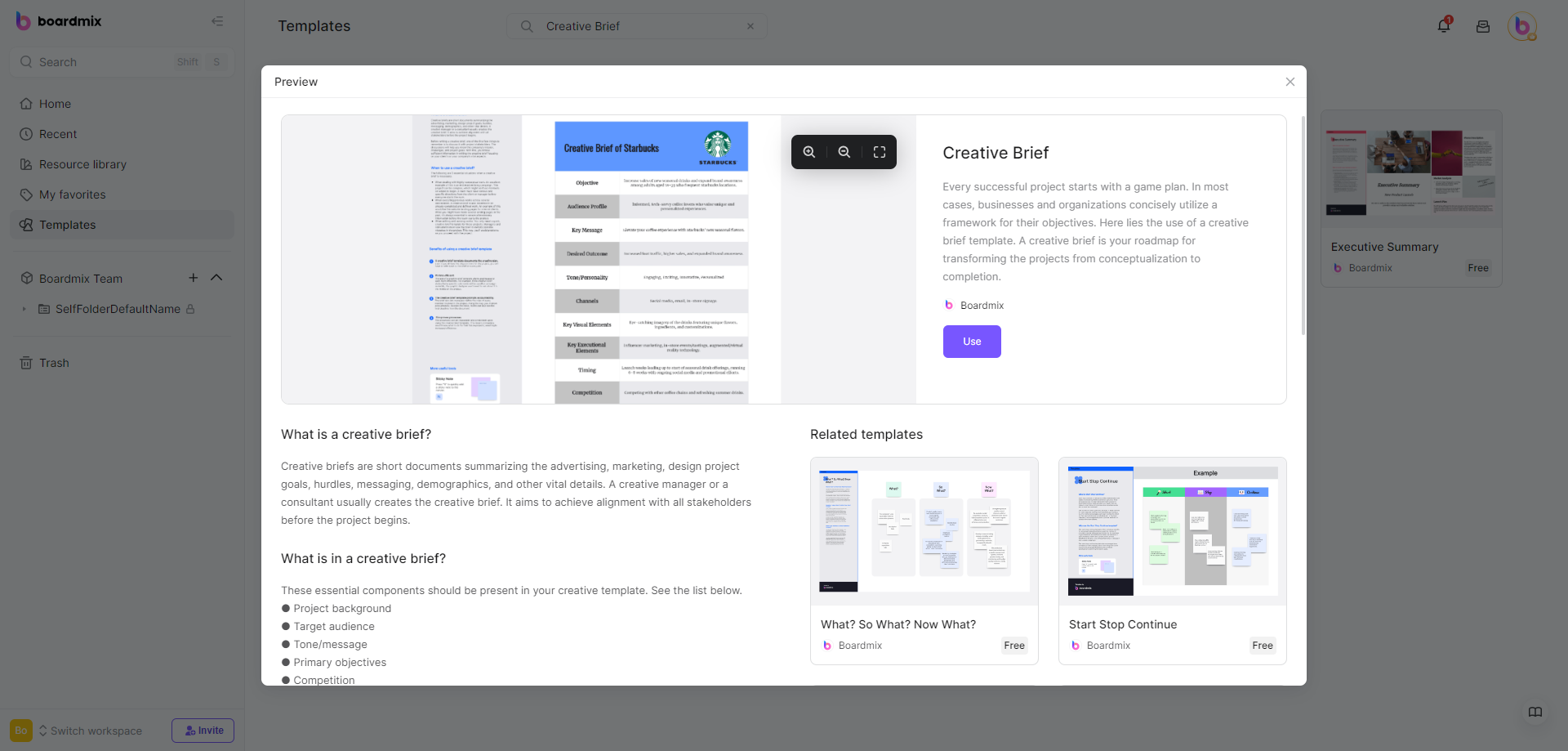
4. Customize the template to fit your project. Add or remove sections, modify headings, and rearrange the layout as needed. Make sure to include all the essential elements of a creative brief, such as the project overview, target audience, objectives, key messages, and deliverables.
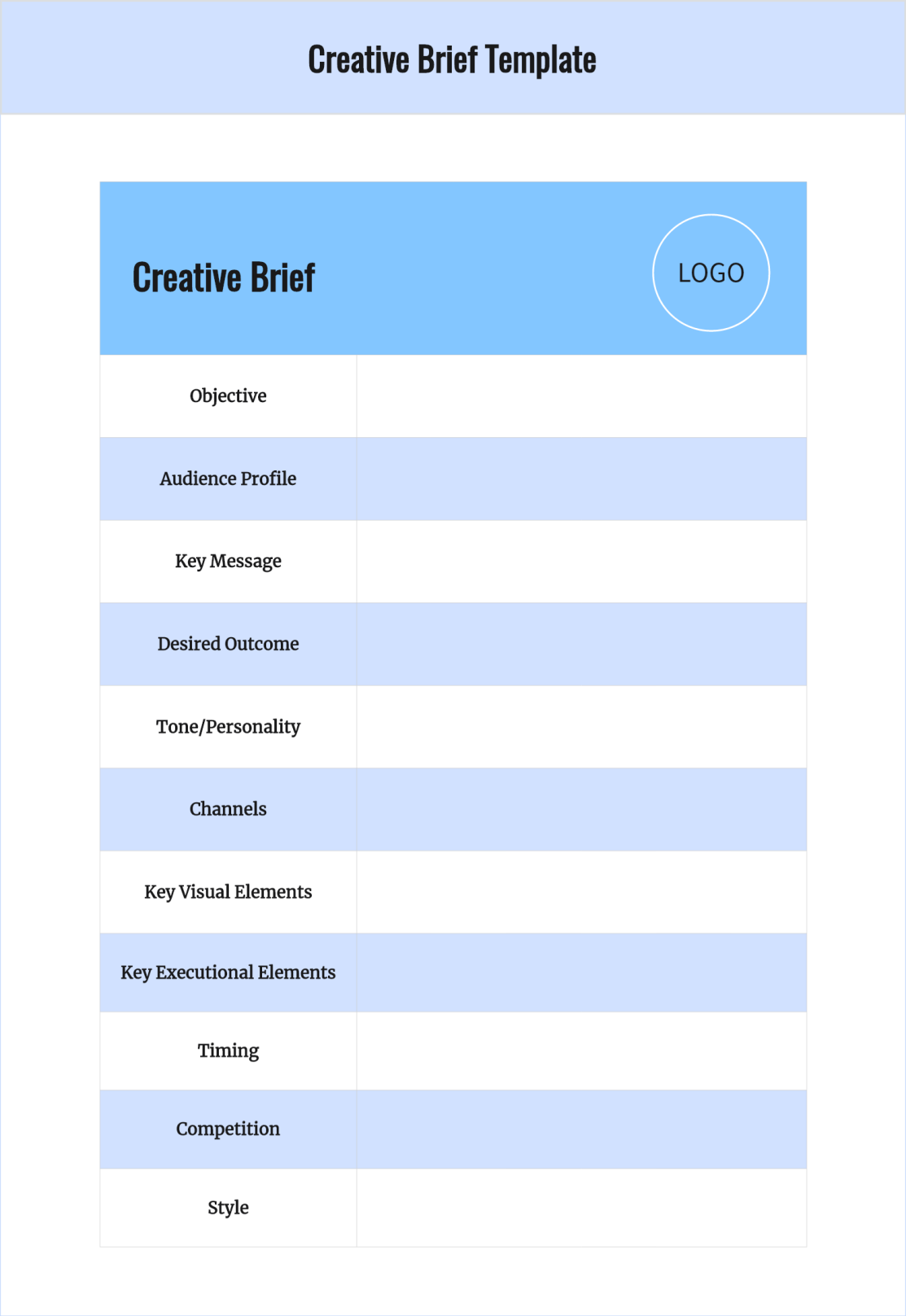
5. Use the text tools in Boardmix to add content to each section of the creative brief. Provide clear and concise information that effectively communicates your project's goals and requirements.
6. Enhance your creative brief with visuals. Boardmix allows you to upload images and files, so consider adding relevant visual elements that support your messaging.
7. Collaborate with your team if necessary. Boardmix enables real-time collaboration, so you can invite team members to review and provide feedback on the creative brief. This ensures that everyone is aligned and on the same page.
8. Once you're satisfied with the content and layout of your creative brief, save and share it with your team. Boardmix provides options to export the board as a PDF or image file, or you can simply share the board's URL with others.
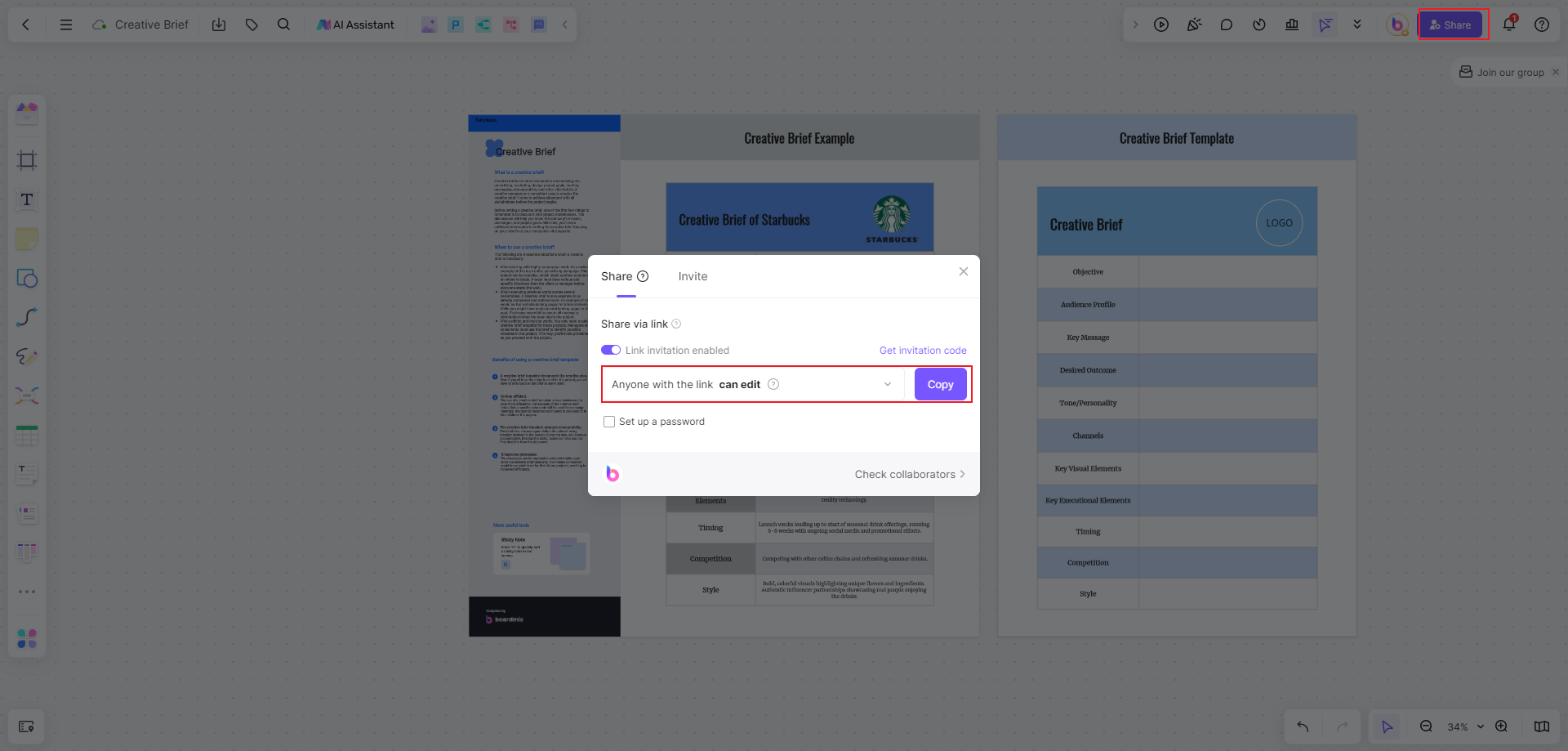
By following these steps, you can create a comprehensive and visually appealing creative brief in Boardmix. The platform's features and intuitive interface make it easy to collaborate with your team and effectively communicate your project's objectives and requirements.
Why Use Boardmix to Make a Creative Brief?
There are several reasons why you should consider using Boardmix to create a creative brief.

Make Your Creative Brief for Free
1. User-friendly interface: Boardmix has an intuitive interface that is easy to navigate, making the process of creating a creative brief simple.
2. Customizable templates: Boardmix offers a wide range of customizable templates specifically designed for creating creative briefs. These templates provide a structure and framework that ensures you include all the necessary elements in your brief.
3. Real-time collaboration: With Boardmix, you can collaborate with your team members in real time. This allows for seamless communication and feedback, ensuring that everyone is on the same page throughout the creative brief creation process.
4. Visual elements: Boardmix allows you to add visual elements, such as images and files, to enhance your creative brief. This can help to engage your audience and communicate your ideas more effectively.
5. Export options: Once you have created your creative brief, Boardmix provides multiple export options. You can save your brief as a PDF or image file, or you can simply share the board's URL with others.
6. Accessibility: Boardmix is a cloud-based platform, meaning you can access your creative brief from anywhere with an internet connection. This makes it convenient for remote teams or individuals who need to work on the brief from different locations.
By using Boardmix, you can streamline the process of creating a creative brief and ensure that all the necessary information is included. The platform's collaborative features and customization options make it a valuable tool for any creative project.













